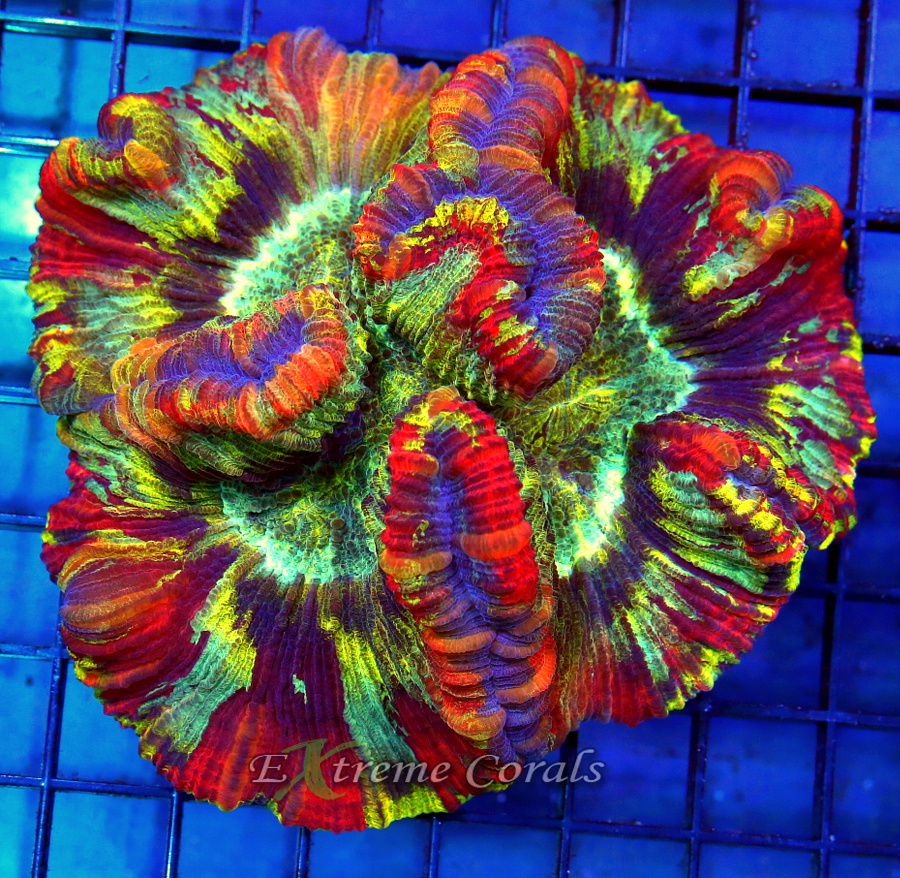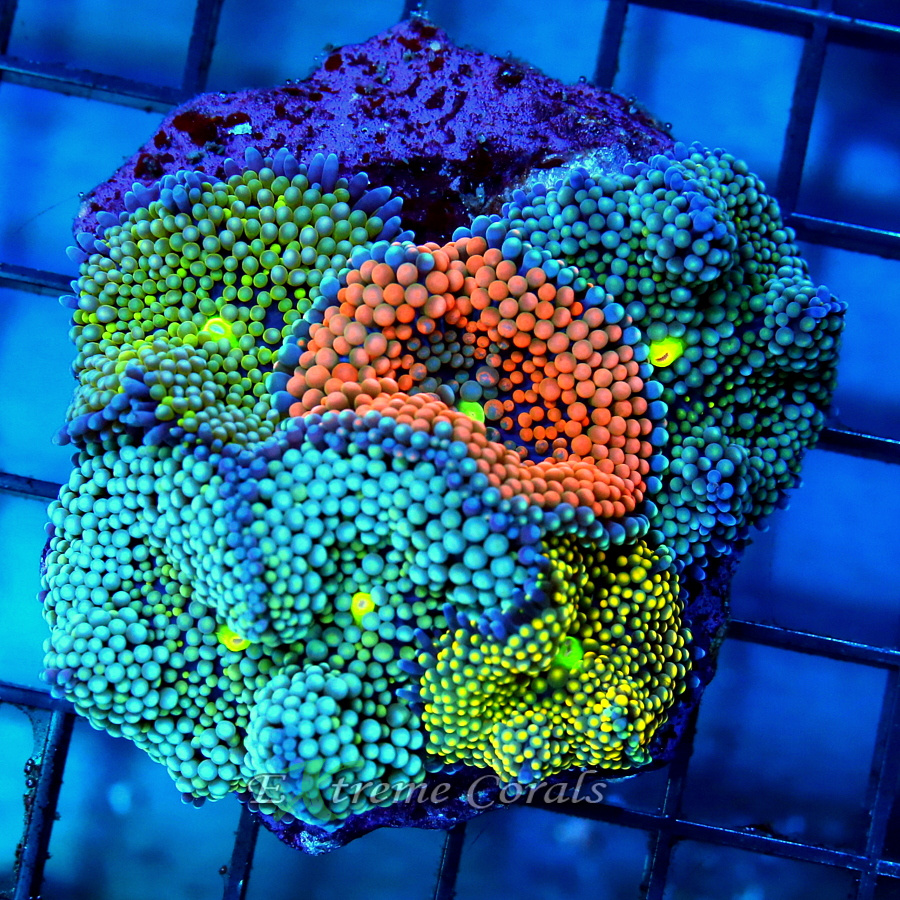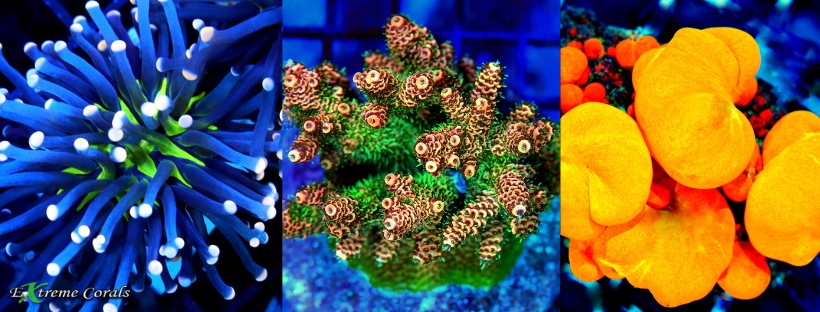Extreme Corals News and Updates
Understanding the Distinction Between Hard and Soft Aquarium Corals
Explore the World of Hard and Soft Aquarium Corals
Discover the unique characteristics of hard and soft aquarium corals, their roles in marine ecosystems, and how to care for them in this comprehensive guide. Whether you're a seasoned reefkeeper or a beginner, dive into the fascinating world of coral reefs with Extreme Corals
by scott Shiles • September 05, 2023
At Extreme Corals, we are passionate about providing valuable insights into the world of aquariums and marine life.
In this comprehensive guide, we'll delve into the fascinating differences between hard and soft aquarium corals, shedding light on their unique characteristics, care requirements, and the distinctive roles they play within the aquatic ecosystem.
Whether you're a seasoned reefkeeper or just beginning your journey into the captivating realm of marine aquariums, this article will serve as your definitive resource.
The Building Blocks: Hard Corals

Hard corals, scientifically known as Scleractinia, derive their name from their remarkable ability to construct intricate skeletal structures as they grow.
These skeletons, formed from calcium carbonate, persist even after the coral's passing, contributing to the formation of coral reefs.
This phenomenon has earned them the moniker "reef-building corals." These corals have been a cornerstone of marine ecosystems for eons, and their impact on the underwater world is monumental.
Reef-Building Pioneers
The striking, white, and spiky appearance of hard corals' skeletons has made them a symbol of reef landscapes. They play a vital role in reef construction by accumulating layer upon layer over time, elevating the reef's height.
As new generations of hard corals settle and grow atop these ancient formations, the reef's complexity and diversity increase.
Notably, the calcified remnants of hard corals eventually transform into rock-like structures, forming the basis of what we refer to as "live rock."
Architects of the Underwater World
Hard corals are not mere inhabitants of the reef; they are architects that actively contribute to the growth and maintenance of the ecosystem.
These corals are exceptional in their ability to create and shape reefs, a process that can span decades and even centuries.
The intricate interplay between different species of hard corals forms the backbone of the coral reef structure, offering shelter, breeding grounds, and sustenance to countless marine species.
Embracing the Flexibility: Soft Corals

Soft corals, scientifically referred to as Alcyonacea, represent a diverse group of marine organisms that possess a distinct charm and adaptability.
Unlike their hard coral counterparts, soft corals lack the characteristic hard skeletons. Instead, they rely on a delicate internal structure for support.
This flexibility allows them to sway and move gracefully with the currents, adding a captivating dance-like quality to the underwater landscape.
The Fragile Elegance
While soft corals may lack the permanent skeletons of hard corals, they exhibit a fragile elegance that is equally mesmerizing.
The presence of microscopic spindles called sclerites within their tissue aids in maintaining their shape and structure. However, when soft corals perish, these delicate components vanish, leading to the potential shrinking and disappearance of the coral.
This stark contrast to hard corals' enduring skeletons underscores the intricate balance of life within marine ecosystems.
Beyond Boundaries: LPS and SPS Corals
Hard corals further diverge into two distinctive categories: Large Polyp Stony (LPS) and Small Polyp Stony (SPS) corals. These subcategories add an extra layer of complexity to the already diverse world of corals.
Large Polyp Stony (LPS) Corals
LPS corals showcase captivating diversity in shape and color, often boasting fleshy bodies that conceal their underlying skeletons.
This group includes corals like Hammer Coral, Torch Coral, Frogspawn, and Acanthastrea.
Notably, LPS corals exhibit mesmerizing fluorescence under blue LED lighting, adding a captivating glow to your aquarium.
Small Polyp Stony (SPS) Corals
SPS corals, renowned for their intricate branching and tabling formations, epitomize the picturesque coral reef image.
Unlike LPS corals, SPS corals feature a thin skin that covers their skeleton, comprised of numerous coral polyps.
These corals demand meticulous care and thrive under specific conditions, making them a challenge and a reward for dedicated reefkeepers.
Creating the Ideal Habitat
At Extreme Corals, we understand that each coral type demands a unique environment to thrive.
Whether you're drawn to the delicate beauty of soft corals, the charismatic diversity of LPS corals, or the breathtaking intricacy of SPS corals, creating the perfect habitat is crucial.
Soft Corals' Easygoing Nature
For those starting their reefkeeping journey or working within budget constraints, soft corals offer an excellent entry point.
These corals are forgiving of minor fluctuations in water quality, light intensity, and flow. Setting up a tank for soft corals involves rock, sand, appropriate lighting, and a wave maker for adequate circulation. Green star polyps and leather corals are particularly well-suited for beginners.
Learn more about corals well-suited for beginners
LPS Corals: A Symphony of Shapes
LPS corals flourish with careful attention to their dietary needs and water chemistry.
The key to a successful LPS reef tank lies in providing moderate flow, high-quality lighting with a strong blue spectrum, and regular feeding.
These corals have the potential to become the centerpiece of your aquarium, captivating both novice and experienced reefkeepers alike.
SPS Corals: A Challenge and Triumph
Branching, tabling, and swirling shapes define SPS corals, and successfully cultivating them requires unwavering dedication.
Bright lighting, robust water flow, meticulous water quality management, and automated dosing systems are essential components of an SPS-focused tank.
These corals epitomize the pinnacle of reefkeeping achievement, providing a rewarding yet demanding experience.
Final Thoughts
At Extreme Corals, we believe that understanding the nuances of hard and soft aquarium corals is the first step toward creating a thriving marine ecosystem within your aquarium.
So, if you are looking for either Hard Corals (LPS Corals or SPS Corals) or Soft Corals to add to your coral reef tank, Consider visiting our website or Contact us

